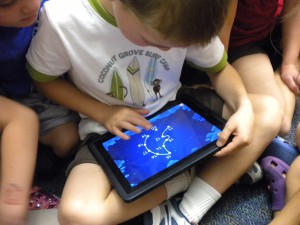Competency-based education is nothing new. Dating back to the 1990’s, postsecondary institutions have been integrating CBE as a means of measuring learning as opposed to measuring time. A more robust, self-paced method of assessment, “CBE shifts the focus from grades to learning, emphasizing frequent, meaningful feedback that empowers students to take more responsibility for learning than in conventional models” (Educause, 2014). Advancements in technology have since brought a new focus on CBE, as an ideal solution for the assessment of learning in both K-12 and higher education.
Grades to Mastery
With extensive units to cover and a hectic curriculum to complete, mastery of learning is extremely difficult for educators to facilitate. With the emphasis placed squarely on grades as students work towards a standardized exam, many struggle to keep up the pace, with little to no accurate assessment of learning taking place. According to a 2014 report by Educause, competency-based education “focuses on learning, pushing students toward mastery rather than a grade, and it brings needed emphasis on the assessment of learning.” With students advancing upon demonstration of mastery, CBE offers a feasible alternative to standard education, in which effective feedback plays a key role. “Feedback is quick and frequent, and because it is structured as formative assessment, this feedback is an integral part of the learning experience, rather than occurring at the end.”
With students no longer singing from the same hymn-sheet, CBE enables a more personalized learning experience, adapted to each student’s pace. “Research indicates that students are more active, engaged, and motivated when working with coursework that is challenging but within their capacity to master. CBE accomplishes this by linking progress to mastery, avoiding boredom for those moving quickly and frustration for students who need more time.”
21st Century CBE
Technology has since stepped in to take competency-based education up a notch. Adaptive systems like Fishtree incorporate CBE through a scaffolding system that adapts to a student’s pace, needs and abilities. Assessment through Fishtree is structured on an objective-by-objective basis, focusing on mastery of each unit of learning through consumable chunks. The system makes personalized resources available to any student struggling with a single learning objective, allowing for advancement upon demonstration of proficiency. The emphasis is kept on providing frequent, meaningful feedback, with instant messaging facilities between teacher and students. Educators remain clued in on student progress through powerful analytics that track the learning paths taken by each, showing exactly where a student is struggling, who requires support, and who is advancing.
With adaptive systems like Fishtree taking competency-based education to the next level, K-12 education is taking lessons from higher education, integrating systems that offer a more rounded learning experience. By bringing mastery to the fore, students are being offered the learning experience that works for them. Splitting the curriculum into small parts that are easy for students to digest, they become motivated to master every every rung on the learning ladder, striving towards more achievable goals. Educators are empowered through CBE as learning is measured effectively on a continuous basis, eliminating the guesswork, and ensuring the support network is in place for struggling students, wherever, and whenever it’s needed.
Start exploring the possibilities of competency-based education with Fishtree’s adaptive learning platform. Sign up for a FREE trial, or get in touch for more!
About the author:
Lorna Keane is a teacher of French, English and ESL. She specializes in language teaching and has taught in second and third-level institutions in several countries. She holds a B.A in languages and cultural studies and an M.A in French literature, theory and visual culture. Follow her on Twitter or connect on LinkedIn.
Image credits: Anthony P Buce / CC BY 2.0
